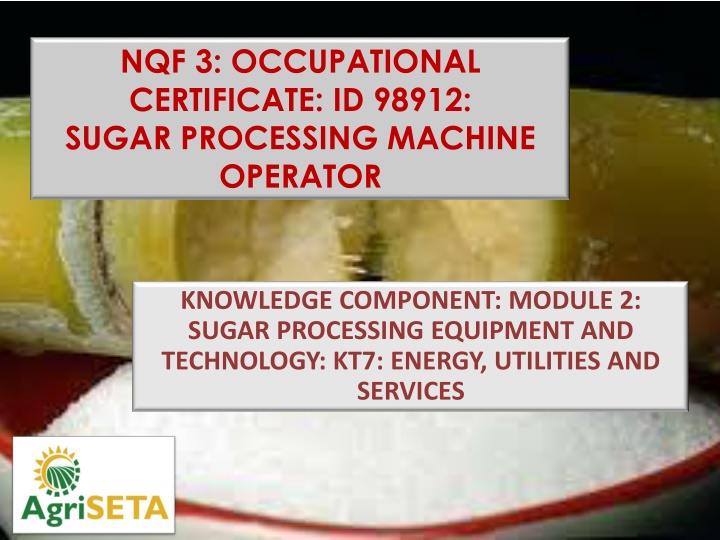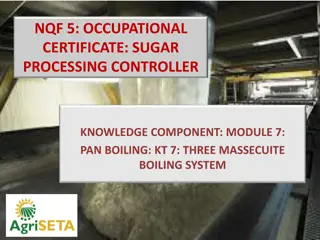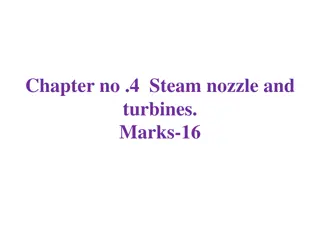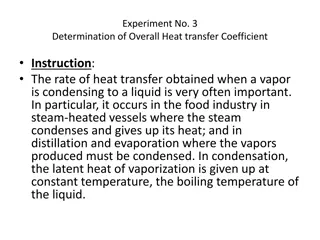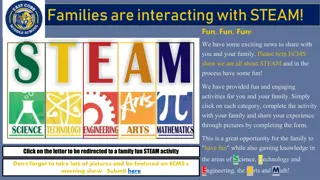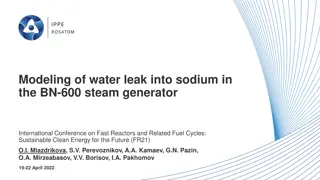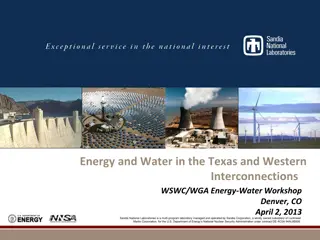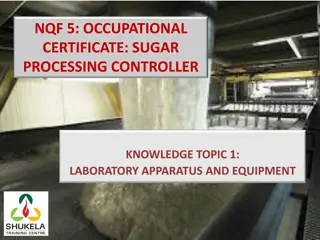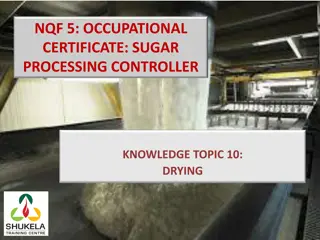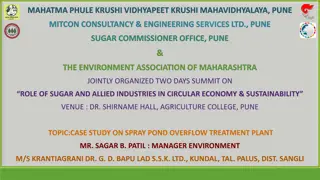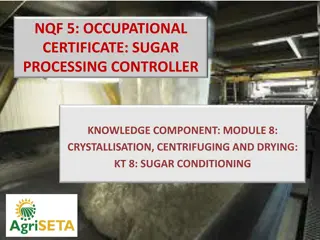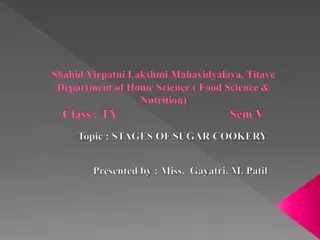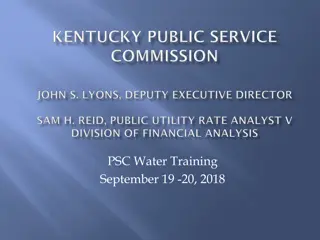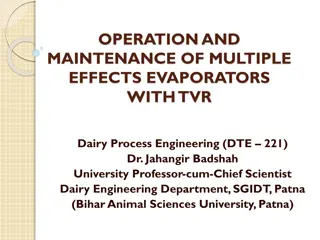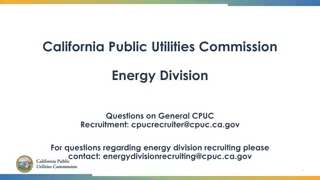Energy and Utilities in Sugar Processing: Steam, Electricity, Water
A sugar mill relies heavily on heat energy for various processes, using steam and electricity as sources. Steam is crucial for heating juice in evaporators and powering equipment, while electricity is used for various operations. Water is essential for different sugar processing stages, requiring careful management to minimize external supply reliance.
Download Presentation

Please find below an Image/Link to download the presentation.
The content on the website is provided AS IS for your information and personal use only. It may not be sold, licensed, or shared on other websites without obtaining consent from the author.If you encounter any issues during the download, it is possible that the publisher has removed the file from their server.
You are allowed to download the files provided on this website for personal or commercial use, subject to the condition that they are used lawfully. All files are the property of their respective owners.
The content on the website is provided AS IS for your information and personal use only. It may not be sold, licensed, or shared on other websites without obtaining consent from the author.
E N D
Presentation Transcript
NQF 3: OCCUPATIONAL CERTIFICATE: ID 98912: SUGAR PROCESSING MACHINE OPERATOR KNOWLEDGE COMPONENT: MODULE 2: SUGAR PROCESSING EQUIPMENT AND TECHNOLOGY: KT7: ENERGY, UTILITIES AND SERVICES
Steam The sugar mill demands a huge amount of heat for sugar production. Heat is used to affect many processes including initial removal of sugar from sugarcane (imbibition), boiling juice in the evaporators and crystallization until sugar. The two sources of heat energy used in a sugar mill are steam and electricity..
Steam (cont.) Steam has two uses in the sugar mill. As the driver of several of the processes directly, such as the heating of the juice in the evaporators. It is generally the exhaust steam from the second use that is used for these process heating purposes. For power generation, as the driver of some of the equipment such as turbines and power generators.
Steam in Evaporators The evaporator station can rightly be regarded as the heart of a sugar factory because it removes most of the water from the juice thus preparing it for crystallization. At the same time it condenses the major portion of steam to provide boiler feed water and provides vapour to heat the pans, juice heaters, diffuser and other ancillaries. Common evaporator vessels are shell and tube heat exchangers mounted vertically and provided with an efficient means of circulating juice and separating the vapour from the concentrated juice.
Electricity Electricity is used in the Sugar Mill: Crane system, Cutters, Various kinds of motors, Centrifugal machines, Juice clarifiers, Driers, Bucket elevators, Air compressors, Magnetic separators, Pump house, Work shop facilities and Lighting. Very often this electricity is generated by the burning of bagasse coming out of the milling process. Power house steam turbines can use the steam from boilers where bagasse is burned.
Water In the sugar process, water requirements are the following: Imbibition, Process water use, Lime make-up water, Flocculants make-up water, Filter wash, Pan house requirements and Service water requirements. Even though water forms a major part of the sugar manufacturing process, the use of external supplies should be kept to a minimum, because they inflate the quantity to be disposed of. It is possible for a mill to exist without an external supply, providing water circulation in the mill is carefully managed.
Water (cont.) Steams containing water entering and leaving a sugar mill are shown in the graphic below:
